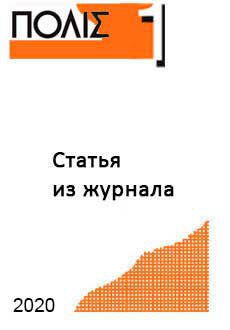Online shop of "Polis. Political Studies" Journal
We in the world, the world in us
Sergeev V.M., Kazantzev A.A., Medvedeva S.M. Territorial Heterogeneity of Globalization and the New Types of Conflicts. – Polis. Political Studies. 2020. No. 1. P. 44-61. (In Russ.).
Free!
globalization, global crisis, international conflicts, global gateways, postindustrial economy.
The article aims to investigate the interrelations between current crisis of economic globalization, on the one hand, and decay of USA hegemony and escalation of international conflicts, on the otherhand. For this purpose we provide synthesis of theories of hegemony within neoliberalism, neorealism and world-system approach based on theory of transactional economy (D. North) and theory of megalopolises- “global gateways” (D. Andersson), which provides the analysis of territorial distribution of relationships in transactional economy. Thus, in this paper we disprove the widespread statement, that globalization is related to the process of uniform increase of connections between all parts of the world. On the contrary, we conceive globalization as the territorial heterogeneity of relationships based on social heterogeneity of resource allocation in the world. Maintenance of this heterogeneity requires the hegemony in world politics. In the period of decrease of economic growth it provokes the escalation of conflicts. If the period of economic decline coincides with the crisis of hegemony (current situation with Trump administration), it stimulates the crisis of economic globalization. The situation also provokes the vast gap between the world economics’ demands in stability and inability of the system of world politics to maintain it. On its turn, escalation of conflicts related to decrease of level of predictability, decrease of mutual credibility, arms race etc., generates new secondary cycles of instability. Above mentioned processes are the basis of expanding recently multi-level crisis of globalization. Our analysis allows formulating three scenarios of development of this crisis (the transit to multipolar global management, partial return to some period of USA hegemony and “hegemonic cold war” between the USA and China). These scenarios are ranged in terms of level of conflictness and level of negative impact on the world economy. In the risk zone are the semi-peripheral areas, where the most intensive clashes of key world actors take place. The risk zone also encompasses Post-Soviet states.
 English
English Русский
Русский

Reviews
There are no reviews yet.